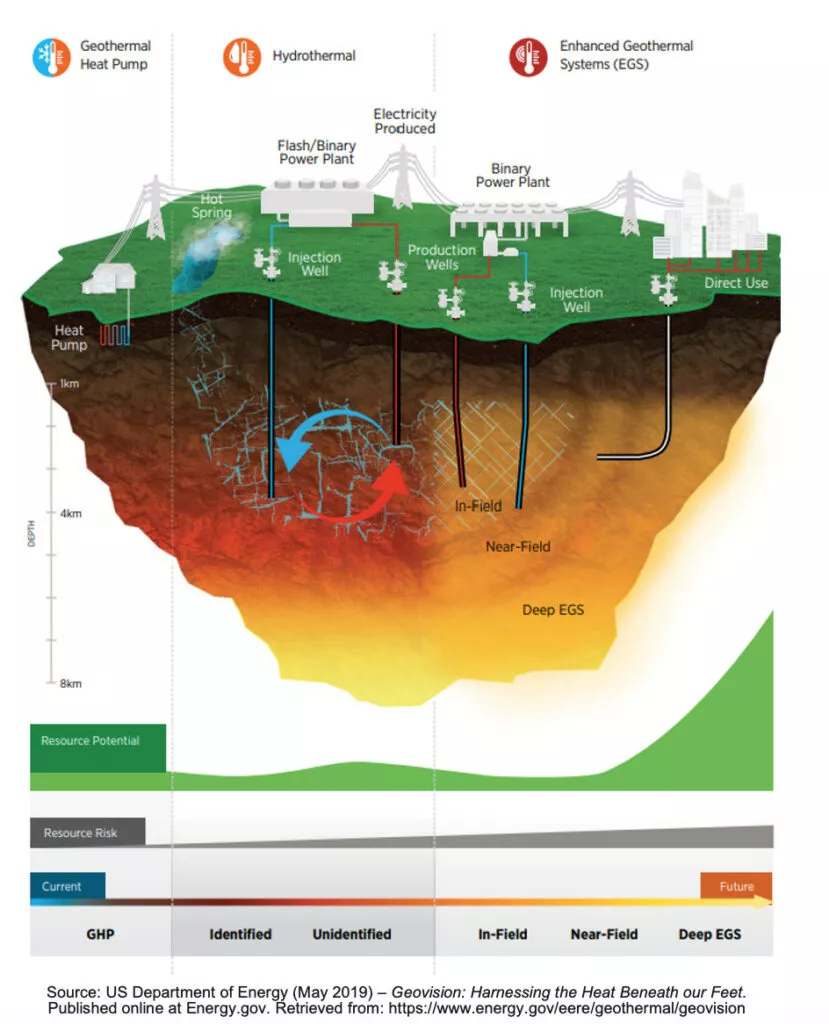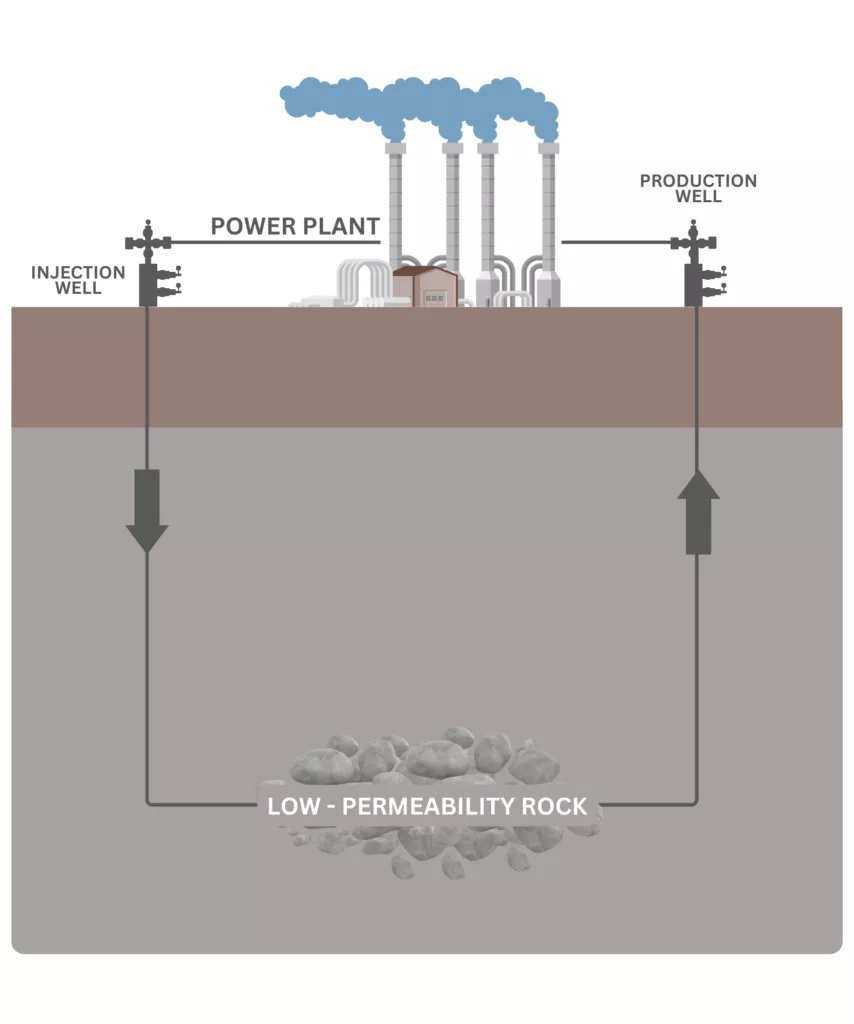Geothermal Well Drilling

Geothermal energy is a renewable energy source that harnesses heat from within the Earth. This is naturally occurring hydrothermal heat that can be used for various applications, including electricity generation, direct heating, and industrial processes. High-temperature geothermal reservoirs are close to the Earth’s surface and are typically found in regions with volcanic activity, tectonic plate boundaries, and other geologically active areas. Common technologies include dry steam, flash steam, and binary cycle power plants.

Because of the excessive heat in these regions, there could be potential issues with geothermal well drilling and completion as well as finding suitable reservoirs for geothermal applications.
Fortunately, advancements in technology, such as Enhanced Geothermal Systems (EGS), are expanding the potential for geothermal energy by enabling the use of resources in a wider range of locations. Additionally, ongoing research aims to lower the costs of geothermal well drilling and mitigate environmental impacts, making geothermal a more viable and widespread energy solution.
Enhanced geothermal systems can exploit the Earth’s heat at greater depths where natural hydrothermal reservoirs are not present. It can involve creating artificial reservoirs by injecting water into hot dry rocks to create fractures and extract heat.
Geothermal Well Drilling
EGS technology involves various methods and tools used to explore, access, and manage the underground environment where it operates.
While conventional geothermal systems are currently more widely used, EGS offers the promise of expanding geothermal energy’s reach and potential. This is why IPT’s geothermal well engineering and drilling service experts specialize in EGS.

Proving up an Enhanced Geothermal System (EGS) location involves several critical steps, from initial site selection to detailed testing and evaluation.
IPT can provide full project management services for geothermal well drilling projects, including:
IPT can provide reservoir and geologic assistance with reviewing geological surveys to identify areas with high geothermal gradient: The use of geological surveys to locate regions with a high geothermal gradient, indicating the presence of significant heat at accessible depths. IPT engineering can assess rock properties through core sampling to evaluate the type and properties of the subsurface rock to ensure it is suitable for creating fractures and sustaining a geothermal reservoir.
IPT’s geothermal well drilling services can engineer and execute thermal gradient wells to measure temperature gradients and estimate the depth to the desired temperature zones. Core sampling can occur for detailed analysis of rock properties, including permeability, porosity, and thermal conductivity. In addition, temperature logging to measure temperature at various depths are run to confirm the presence of sufficient geothermal heat.
IPT can engineer hydraulic fracturing programs to inject high-pressure water to create and enhance fractures in the rock, increasing its permeability and creating pathways for fluid circulation. Microseismic monitoring techniques are often used to track fracture propagation and adjust injection parameters as needed.
IPT can assist in conducting a thorough EIA to assess potential impacts of geothermal well drilling on local ecosystems, water resources, and communities, ensuring compliance with regulations.
IPT can assist in permitting, well AFEs, well plans, completion designs and field operational execution.
